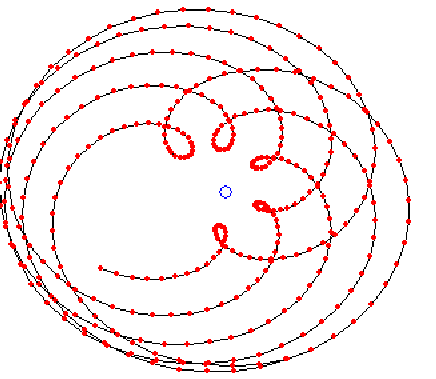The planets follow noticeably different motion to the stars. They follow the nightly rotation, but move faster and their position in the sky relative to the fixed stars changes from night to night. They appear to 'wander' – the name planet is derived from the greek for 'wanderer'. Occasionally a loop appears in their orbits. The apparent motion of Mars over a ten year period is shown below.

The loops above appear to show Mars reversing direction relative the fixed stars.
Early astronomers, especially Ptolemy, thought the Universe revolved around the Earth, and evolved a complicated system of cycles and epicycles to explain the motion of the planets. The picutre was simplified by Copernicus, who had the plnaets revolving around the Sun, removing the need for epicycles.
